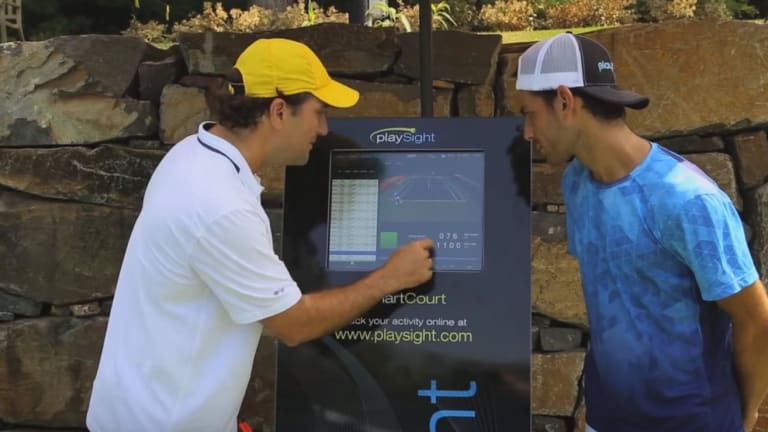After graduating with a degree in political science, Pecotic was far from burned out. Having just benefited from his first four years of full-time competitive tennis, he decided to give the pro tour a try (playing for the Croatian flag).
He read an article in which Novak Djokovic (a fellow Belgrade native) shared positive reviews of PlaySight, a fairly new tennis technology. An intrigued Pecotic reached out to Gordon Uehling, the founder and managing director of CourtSense (a New Jersey training that is the first PlaySight “smart” club) to see what all the hype was about. Uehling liked Pecotic so much, he asked him to stay the summer to train.
“It’s been two years now,” Pecotic said. “I started at No. 0 in January 2014, and today I’m No. 207 in the world.”
Pecotic is the first professional player to use PlaySight from the very onset of his career, making him a guinea pig of sorts for the measured impact of the technology.
“I might have been there on the day they put in the first kiosk,” Pecotic said. “It was cool that I was sort of there from the beginning, which I think its great for me to see how much its evolved and how much work has been put into it.”
PlaySight works by using several cameras placed around the court to collect data—everything from shot placement and speed to ball arc and player positioning is recorded. An on-court kiosk registers all the information and help players instantly review drills or points by playing back video and allowing coaches to draw directly on the screen. Players and coaches can then go online to access recorded matches and practices, as well as statistics and analysis. All court time can also be live streamed from any PlaySight court.

